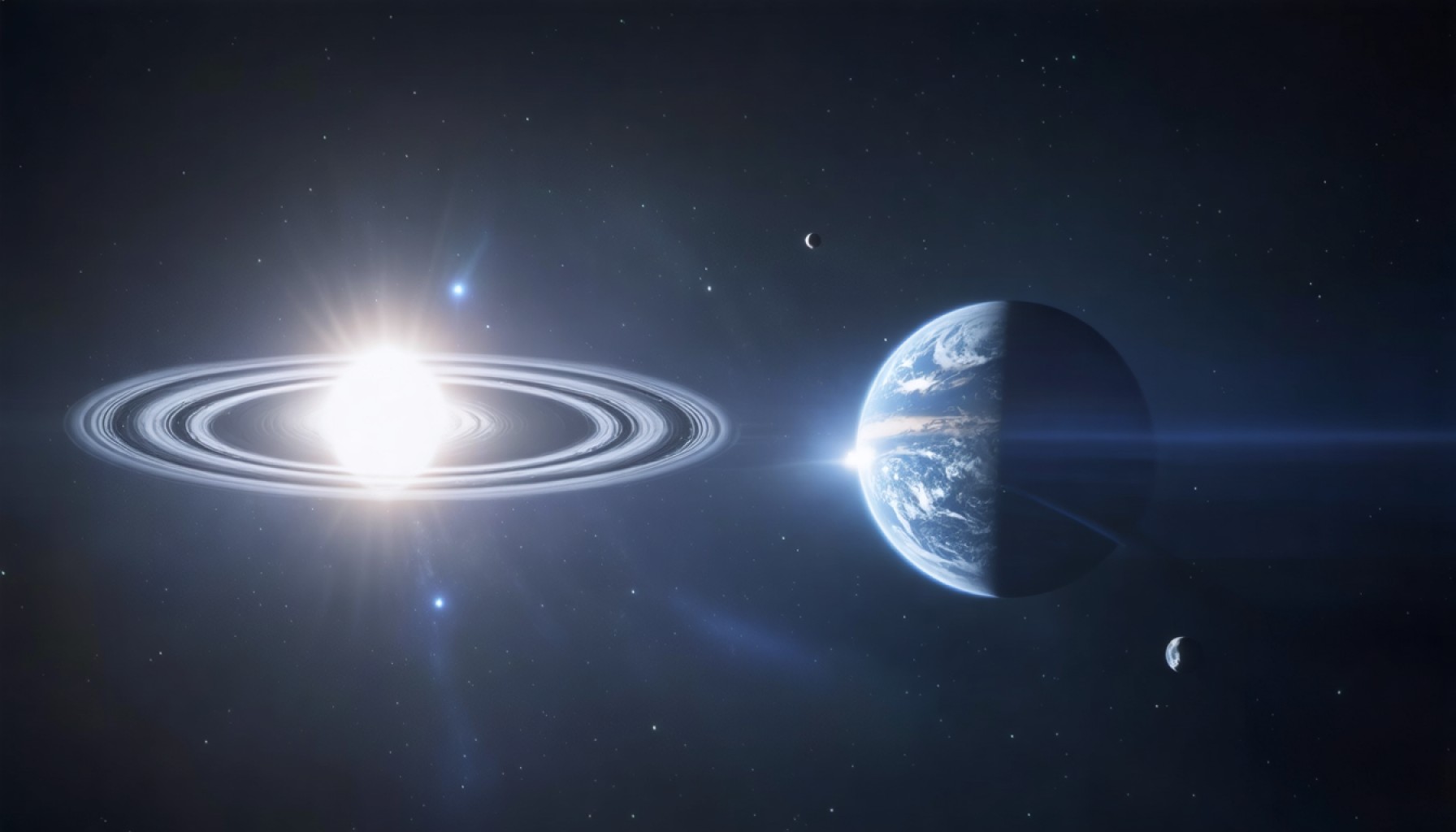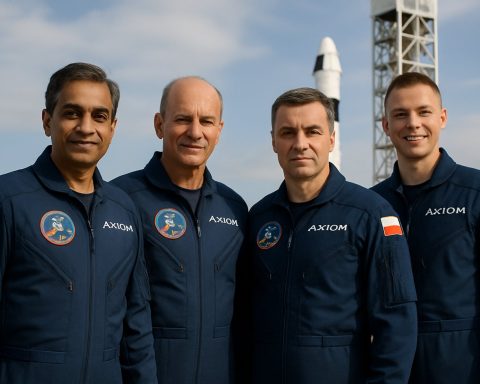- K2-18b, an exoplanet 120 light-years away in Leo, is a key focus in the search for extraterrestrial life due to its location within a “Goldilocks” zone.
- Discovered in 2015 during NASA’s K2 mission, K2-18b is larger than Earth but less dense, making it a prime candidate for study.
- The James Webb Space Telescope is used by researchers, led by Nikku Madhusudhan from the University of Cambridge, to explore its atmosphere for biosignatures.
- Atmospheric studies have revealed dimethyl sulfide and related molecules, potentially indicating biological processes similar to those on Earth.
- The discovery of life-indicating conditions on K2-18b could fundamentally alter our understanding of life’s existence in the universe.
- This research pushes humanity closer to finding answers to whether life exists elsewhere, embracing the vastness of cosmic exploration.
Astronomers stand at the precipice of a cosmic revelation as their gaze falls upon K2-18b, a gargantuan exoplanet more than 120 light-years away, orbiting a faint red dwarf in the constellation Leo. This celestial body, a titanic world suspended in the cosmos, might harbor the answers to the age-old question: Are we alone in the universe?
Encompassed by the cool embrace of a “Goldilocks” zone—where temperatures are neither too hot nor too cold—K2-18b presents an opportune cauldron for the ingredients of life to simmer. Less dense than Earth yet more significant in size, this enigmatic planet has been on the radar of earthly scientists since its discovery in 2015 during NASA’s K2 mission, marking it as a captivating focal point for exoplanetary exploration.
Using the soaring capabilities of the James Webb Space Telescope—its golden eye fixed firmly on the mysteries that lay beyond our stellar neighborhood—researchers have embarked upon a cosmic quest. This latest investigation, spearheaded by Nikku Madhusudhan and a dedicated team at the University of Cambridge, yielded enticing clues nestled within the planet’s atmosphere.
As K2-18b embarks on its routine orbit, it periodically eclipses its parent star from our vantage on Earth. These transitory moments allow the sophisticated eyes of Webb to peel back layers of time and space, revealing the chemical symphony playing out in the planet’s atmosphere. It is here that potential biosignatures emerge, embedded in telltale whispers of sulfur-laden molecules, akin to those harnessed by marine algae on Earth.
Dimethyl sulfide and its chemical kin dance through K2-18b’s ether, molecules that, under our sky, arise predominantly from microscopic life. Yet skepticism is the bedrock of scientific pursuit, and amid this vibrant planetary tableau, researchers exercise caution. Unknown processes might weave these atmospheric tapestries, or could it truly be the handiwork of alien organisms nestled in deep galactic oceans?
The implications of life, or the conditions ripe enough to recreate it, extend beyond K2-18b’s ghostly contours. A monumental discovery of this nature could echo across the eons, reshaping our understanding of life’s pervasiveness in the universe. In their cautious stride forward, astronomers endeavor to harness further light—a luminous thread unraveling truths only time and diligent scrutiny can reveal.
As humanity aims its telescopes to the heavens, painting the dark with visible spectra and invisible hopes, each glimpse at planets like K2-18b presses closer to unveiling new cosmic neighbors. Our journey through the stars, marked by a hunger for companionship somewhere in this vast expanse, reminds us that with every discovery, we dance a little closer to answering the greatest existential query: Is anybody out there?
Is K2-18b the Key to Finding Extraterrestrial Life? Answers Revealed!
The Enigma of K2-18b: A Habitable Zone Giant
K2-18b is an intriguing exoplanet that captures the imagination of astronomers and the public alike. Situated approximately 120 light-years from Earth in the constellation Leo, it circles a red dwarf star and resides in the so-called “Goldilocks” zone—a region where temperatures might allow liquid water to exist. This location makes it a tantalizing subject when pondering the existence of life beyond Earth.
Characteristics of K2-18b
– Size and Composition: K2-18b is significantly larger than Earth. Despite its considerable size, it possesses a lower density, suggesting a composition made up of lighter materials and potentially an extensive atmosphere (NASA).
– Atmospheric Conditions: The planet’s atmosphere is a focus of much research, with recent analyses by the James Webb Space Telescope indicating the presence of intriguing molecules such as dimethyl sulfide, which on Earth is typically produced by living organisms (ESA).
Exploring the Atmosphere: Potential Biosignatures
– The Role of Dimethyl Sulfide (DMS): On Earth, DMS commonly emerges from marine algae. Its detection in K2-18b’s atmosphere raises exciting yet cautious speculation about potential biological activity or alternative chemical processes that may mimic life.
– Skepticism and Exploration: Scientific skepticism remains essential. Researchers have to consider non-biological sources that may account for these molecules, ensuring that claims about extraterrestrial life are grounded in empirical evidence (University of Cambridge).
Utilizing the James Webb Space Telescope
– Spectroscopic Analysis: The James Webb Space Telescope’s advanced technology allows it to observe K2-18b’s atmospheric composition through a process called transmission spectroscopy. This technique can identify specific wavelengths of light absorbed by atmospheric gases, shedding light on the planet’s chemical makeup (NASA).
– The Ongoing Quest: Astronomers continue to refine their techniques and gather additional data to differentiate between biological and abiotic processes potentially occurring on K2-18b.
Broader Implications and Future Prospects
– The Cosmic Scale: Discovering signs of life or conditions favorable to it on K2-18b could redefine our understanding of life’s ubiquity in the universe, challenging the notion of Earth’s uniqueness (SETI Institute).
– Continued Observation and Exploration: Researchers are planning more detailed observations to verify and expand upon the initial findings, emphasizing multidisciplinary collaboration to interpret the data accurately.
Actionable Recommendations for Aspiring Astronomers
1. Stay Informed: Keep up with the latest research on exoplanets by following reputable sources such as NASA and ESA.
2. Engage with Citizen Science Projects: Platforms like Zooniverse offer opportunities to participate in real-world astronomical research.
3. Educate Yourself: Explore online courses in astronomy or astrobiology to deepen your understanding of life beyond Earth.
For additional insights and resources related to space exploration, visit NASA and ESA.
In conclusion, K2-18b remains a focal point of potential interstellar discovery. Whether it harbors life or simply relays the vast, varied processes of planetary atmospheres, its study enriches humanity’s quest to comprehend the cosmos. As technology and observation techniques advance, the universe may soon reveal secrets that answer the lingering question: Is there anybody out there?







